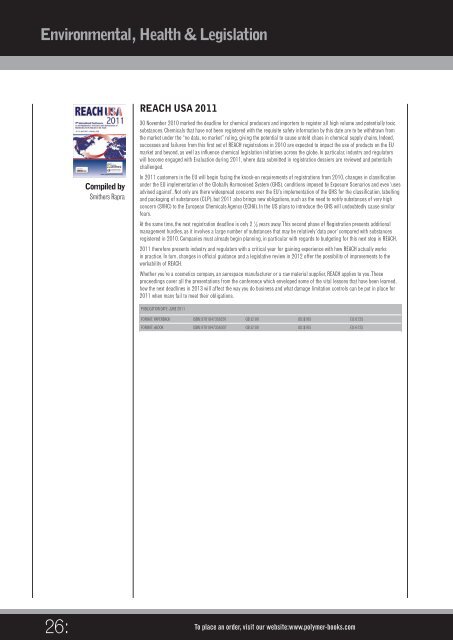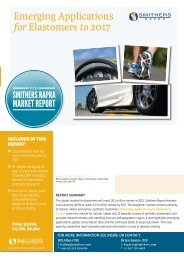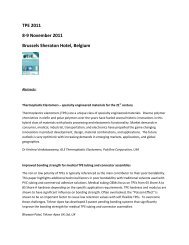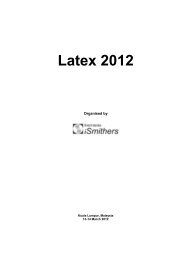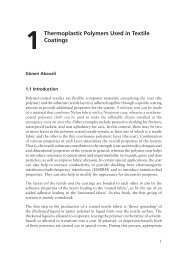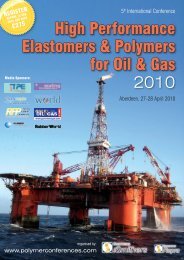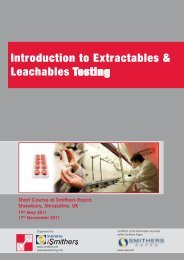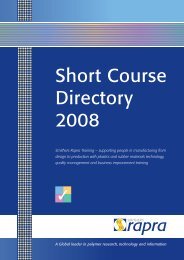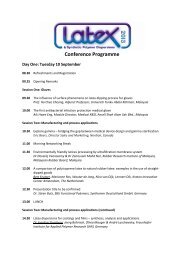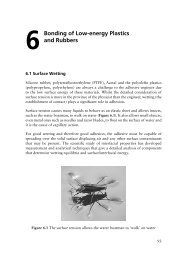download our 2013 catalogue - Smithers Rapra
download our 2013 catalogue - Smithers Rapra
download our 2013 catalogue - Smithers Rapra
Create successful ePaper yourself
Turn your PDF publications into a flip-book with our unique Google optimized e-Paper software.
Environmental, Health & Legislation<br />
REACH USA 2011<br />
Compiled by<br />
<strong>Smithers</strong> <strong>Rapra</strong><br />
30 November 2010 marked the deadline for chemical producers and importers to register all high volume and potentially toxic<br />
substances. Chemicals that have not been registered with the requisite safety information by this date are to be withdrawn from<br />
the market under the “no data, no market” ruling, giving the potential to cause untold chaos in chemical supply chains. Indeed,<br />
successes and failures from this first set of REACH registrations in 2010 are expected to impact the use of products on the EU<br />
market and beyond, as well as influence chemical legislation initiatives across the globe. In particular, industry and regulators<br />
will become engaged with Evaluation during 2011, where data submitted in registration dossiers are reviewed and potentially<br />
challenged.<br />
In 2011 customers in the EU will begin facing the knock-on requirements of registrations from 2010, changes in classification<br />
under the EU implementation of the Globally Harmonised System (GHS), conditions imposed by Exposure Scenarios and even ‘uses<br />
advised against’. Not only are there widespread concerns over the EU’s implementation of the GHS for the classification, labelling<br />
and packaging of substances (CLP), but 2011 also brings new obligations, such as the need to notify substances of very high<br />
concern (SVHC) to the European Chemicals Agency (ECHA). In the US plans to introduce the GHS will undoubtedly cause similar<br />
fears.<br />
At the same time, the next registration deadline is only 2 ½ years away. This second phase of Registration presents additional<br />
management hurdles, as it involves a large number of substances that may be relatively ‘data poor’ compared with substances<br />
registered in 2010. Companies must already begin planning, in particular with regards to budgeting for this next step in REACH.<br />
2011 therefore presents industry and regulators with a critical year for gaining experience with how REACH actually works<br />
in practice. In turn, changes in official guidance and a legislative review in 2012 offer the possibility of improvements to the<br />
workability of REACH.<br />
Whether you’re a cosmetics company, an aerospace manufacturer or a raw material supplier, REACH applies to you. These<br />
proceedings cover all the presentations from the conference which enveloped some of the vital lessons that have been learned,<br />
how the next deadlines in <strong>2013</strong> will affect the way you do business and what damage limitation controls can be put in place for<br />
2011 when many fail to meet their obligations.<br />
PUBLICATION DATE: June 2011<br />
FORMAT: Paperback ISBN: 9781847356291 GB: £100 US: $165 EU: €125<br />
FORMAT: eBOOK ISBN: 9781847356307 GB: £100 US: $165 EU: €125<br />
26:<br />
To place an order, visit <strong>our</strong> website:www.polymer-books.com


